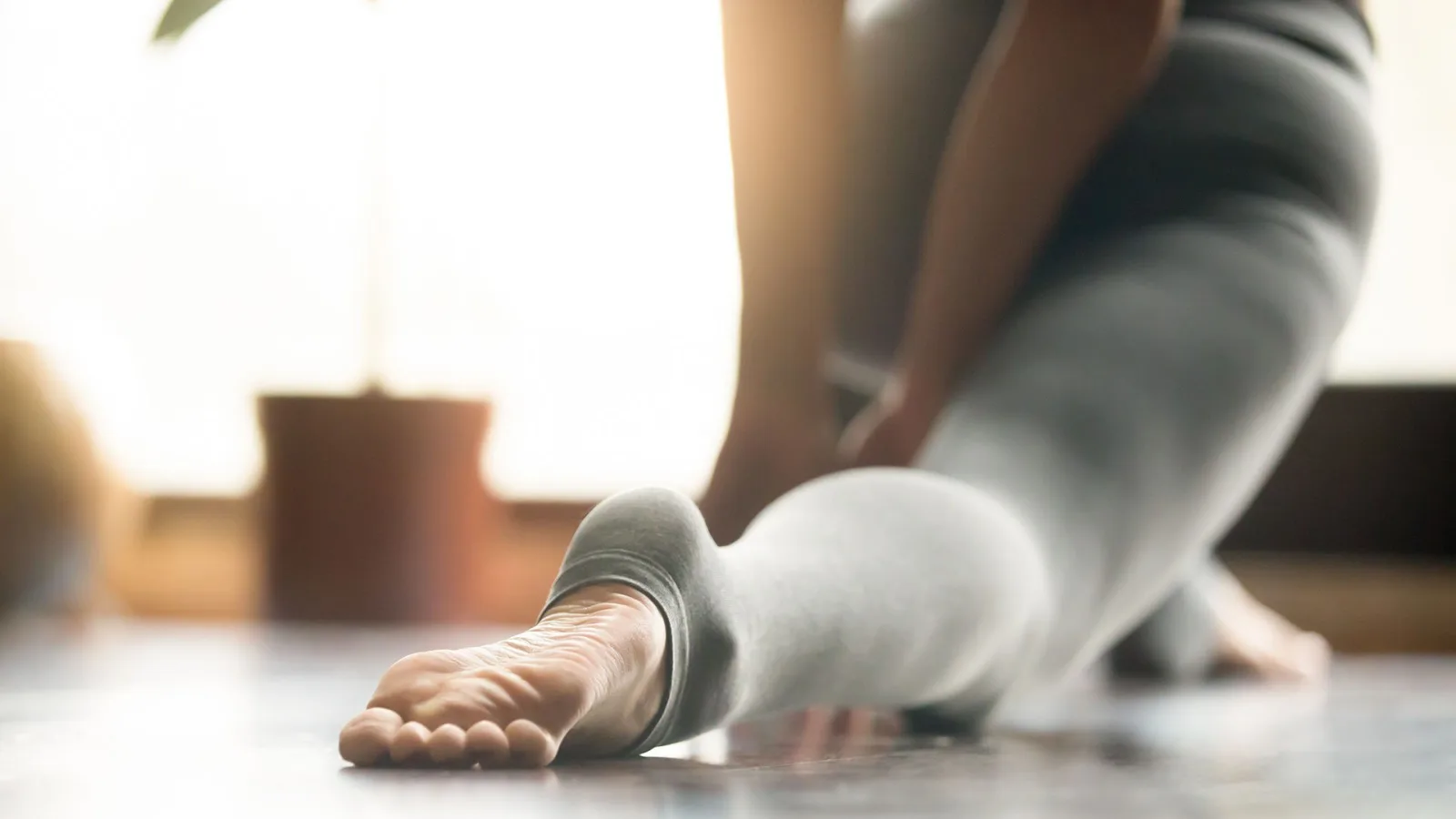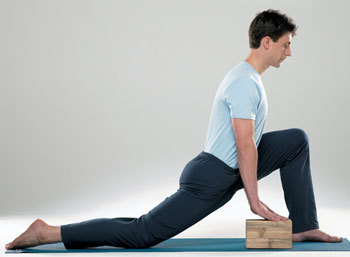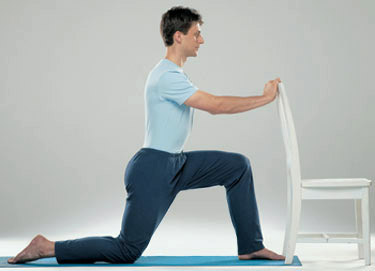
Banarasana: The Lunge Pose
Embedded in most yoga asana sequences is a deceptively simple stretch—banarasana (the lunge pose). But don’t be fooled. This simple posture is a valuable part of a well-rounded practice.
Banarasana is an asana treasure waiting to be discovered!
Over time, flexion of the hip (something we do when we sit, walk, run, and climb stairs) tightens muscles in the leg and pelvis unless it is counterbalanced by stretching—and, as a result, hip movements are gradually restricted. The lunge pose stretches the hip flexors, reversing this tendency and restoring a natural range of motion. Banarasana is an asana treasure waiting to be discovered!
Problem Areas
In order to flex the hip (which brings the thigh and abdomen closer together), muscles must span the hip joint, attaching both to the femur (the upper leg bone) and to the pelvis or spine. The primary hip flexors are the rectus femoris (one of the quadriceps) and the psoas muscle (pronounced “SO-us”). Since the quadricep muscles attach below the knee, excessive tension in them can be destabilizing for the knee joint as well as for the hip. And because the psoas muscle threads downward from the vertebrae of the lumbar spine through the pelvis and onto the femur, symptoms of tightness may include weakness, rigidity, or overarching in the lower back. For those attempting to find a comfortable meditation posture, the stiffness that accompanies these muscle tensions can be discouraging.
Working With Banarasana
The lunge pose helps reverse these problems. Begin by coming to your hands and knees in the table posture. Then step your left foot forward and bring it between your hands. Align your left knee directly over the ankle so that the leg is perpendicular to the floor. Avoid bringing the knee forward from the ankle as this may create pressure on the front of the knee. Extend the right leg behind you, with the knee and top of the foot on the floor. If contact with the floor is uncomfortable for the knee, place a folded blanket or cushion under it.
Find a neutral position for your neck, making it a straight extension of the spinal column, with the head looking down. Once the legs are positioned, lengthen the thighs in opposite directions (left thigh forward, right thigh back) and gently lower the hips and pelvis toward the floor. This will bring the hip flexors into an engaging stretch.
Making Adjustments for Banarasana

Simple adjustments can make the stretch more effective. If bringing the leg forward prevents the hands from reaching the floor, place blocks under each hand to create more space for your torso. If the pelvis remains elevated rather than descending toward the floor, you’ll need to examine a few possibilities: First, cautiously bend the front knee further (it is often not bent far enough to allow the pelvis to descend). Next, stretch the rear leg farther away to create more space for the pelvis. Finally, a high pelvis may also tell you that you are working with a very tight set of hip flexors or problems in the lower back. In this case, place your hands on a chair, rather than lowering them to the floor. By raising your upper torso, you will find it easier to align your pelvis.

Do not strain or attempt to lower the pelvis beyond your comfortable capacity. Straightening and then bending the front leg creates a soothing motion that will amplify the stretch. Remain in the pose 20–60 seconds. When you are ready, come back to the table position and do the pose on the other side.
Beyond the Basics
Next, try this variation, which uses the weight of the torso to intensify the stretch in the quadriceps. Begin in the basic lunge pose. Then raise your torso so that it is perpendicular to the floor and centered over the pelvis. Rest the hands on the front thigh. Soften resistance and gently release the hips further toward the floor. In addition to increasing the stretch, this variation strengthens the quadricep muscles in the forward leg.

Repeat the lunge pose and the variation a number of times on each side. During each repetition, soften resistance to the stretch and explore the new range of movement that becomes possible as you relax into the pose. When you relax superficial tightness, you will gain a deeper stretch through the front of the thighs and hips, making banarasana even more effective in restoring balance to the lower body.
Once you have mastered the lunge pose, you’ll find that other more challenging asanas have become accessible. Parshvakonasana (the lateral angle pose), virabhadrasana (the warrior pose), eka pada kapotasana (the single-legged pigeon posture), and natarajasana (the Lord of the Dance pose) all make use of the flexibility accomplished in the lunge pose.